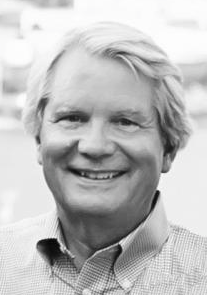LET’S NOT ERASE HISTORY, BUT LEARN FROM IT
By WIN GRUENING
SENIOR CONTRIBUTOR
“Today is a day for his family, his friends and his nation to remember President Nixon’s life in totality. To them, let us say, may the day of judging President Nixon on anything less than his entire life and career come to a close. May we heed his call to maintain the will and the wisdom to build on America’s greatest gift — its freedom; to lead a world full of difficulty to the just and lasting peace he dreamed of. “President Bill Clinton, April 27, 1994.
President Clinton’s eulogy of former President Richard Nixon in 1994 was given two decades after Watergate dominated the headlines. Amid a scandal that engulfed his entire administration, Nixon was forced to resign the presidency in a constitutional crisis that consumed the nation for over two years

In the days prior to Nixon’s funeral, despite severe rain, an estimated 50,000 people waited in lines up to 18 hours to walk past his casket and pay their respects.
Attended by over 4,000 people, including five former presidents, the public funeral was held at the Richard Nixon Presidential Library and Museum, the site of Nixon’s birthplace and boyhood home at Yorba Linda, California.
The accolades and tributes to the former president stood in stark contrast to the disgrace and controversy surrounding his departure from office in 1974.
The reason for this is a good lesson in how we view history.
Recently, I visited the newly remodeled Nixon Presidential Library and learned more about Nixon’s presidency. The day before, I visited the nearby Reagan Presidential Library in Simi Valley.
The presidential library system is a nationwide network of 14 libraries administered by the Office of Presidential Libraries, part of the National Archives and Records Administration (NARA). As repositories for preserving and making available the papers, records, and historical collections of various presidents, they also include public museums that capture history in a way no textbook ever could.
Currently these libraries represent every past president since Herbert Hoover (there are a dozen or so more featuring earlier presidents administered by private foundations, colleges, or non-profits). Construction of the facilities is privately funded, and operational expenses are paid through endowments, user fees and taxpayer funding.
My visits to these two libraries were informative and inspirational. Both presidents had humble beginnings, yet rose to election to our country’s highest office. Both faced many challenges and crises in their lives but persevered to overcome them.
Despite very consequential accomplishments while in office, the Watergate scandal completely eclipsed Nixon’s achievements.
Domestically, Nixon’s influence was largely responsible for desegregation of Southern schools, creation of the EPA, expanded funding for the arts, as well as declarations of war on cancer, illegal drugs and hunger.
In foreign affairs, Nixon ended the Vietnam War (and the military draft), initiated nuclear arms control agreements with the Soviet Union and, as the first president to visit the People’s Republic of China, was widely praised for his efforts to restore diplomatic relations and bring China out of isolation.
Despite Watergate’s damage to his reputation, Nixon never considered withdrawing from public life. In a Los Angeles Times interview in 1978, his spirit and desire to rehabilitate his legacy was evident when he stated. “A man is not finished when he is defeated. He is finished when he quits.”
After his resignation, Nixon retired to his San Clemente home where he wrote his memoirs and a series of best-selling books – almost all dealing with foreign policy. He became a frequent op-ed columnist and guest speaker. He embarked on a series of foreign trips to China, the Mideast, and the Soviet Union and slowly built his reputation as an elder statesman.
Nixon became widely regarded as an expert in foreign policy and his advice was solicited by Presidents Reagan and Clinton. Only twelve short years after his resignation a Gallup Poll ranked Nixon as one of the ten most admired men in the world and Newsweek ran a story on “Nixon’s comeback” with the headline “He’s back”.
President Nixon’s legacy should serve as a reminder that history is more nuanced and complex than any single accomplishment or failure.
Today, demands that we remove statues or ban books for the sake of righting “old wrongs” are misguided. Hiding or misrepresenting history or not considering the context in which it occurred is a disservice to future generations.
Our presidential libraries and their associated historical materials provide an important function is this regard. Indeed, one of the most striking and prominent features of the Nixon Museum is the brutally honest and exhaustive portrayal of the Watergate scandal.
Richard Nixon learned and grew after his disgrace – not despite his mistakes and failures, but because of them.
And so can we – not by distorting or erasing history but by learning from it.
Concise and well thought out article, which goes to prove that knowledge of times or context allows one to ferret out truth and its seekers. Seek and find. Nixon’s time was one of heartbreak. His sin was not in the commission of a crime, it was in its cover-up. Unfortunately, because of the rise of the leftist media, no candid, honest, or reasonable argument could be heard through the din of hate and false accusation. The will of the people was so shattered at the time of Nixon’s presidency, rather than try to ferret out truth, the nation simply turned on its side and went to sleep.